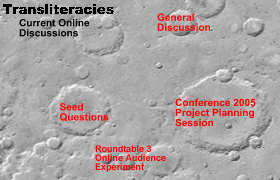The Ockham Initiative
Organization devoted to increasing online reading materials.
“The OCKHAM Initiative seeks to promote the development of digital libraries via collaboration between librarians and digital library researchers. By promoting simple, open approaches and standards for digital library tools, services, and content, the gap between digital library development and the adoption of digital library systems by the traditional library community will be bridged.
To this end, the OCKHAM Initiative received a $425K grant from the National Science Foundation to develop a network of services that will improve the deployability of the National Science Digital Library (NSDL) in traditional libraries. This grant will produce the initial OCKHAM Network – a suite of interoperable digital library services for use by traditional libraries.” (From The Ockham Initiative.)
Starter Links: Information from D-Lib | The Ockham Initiative


